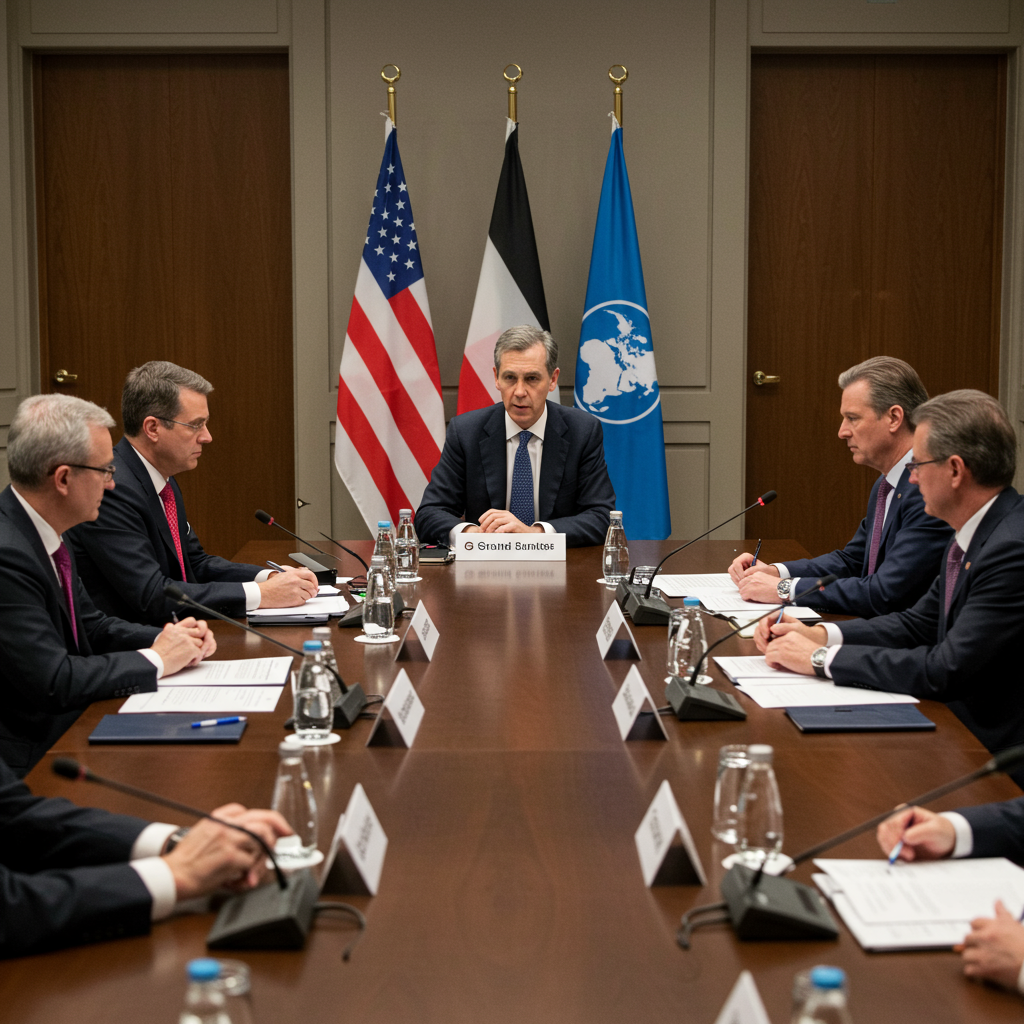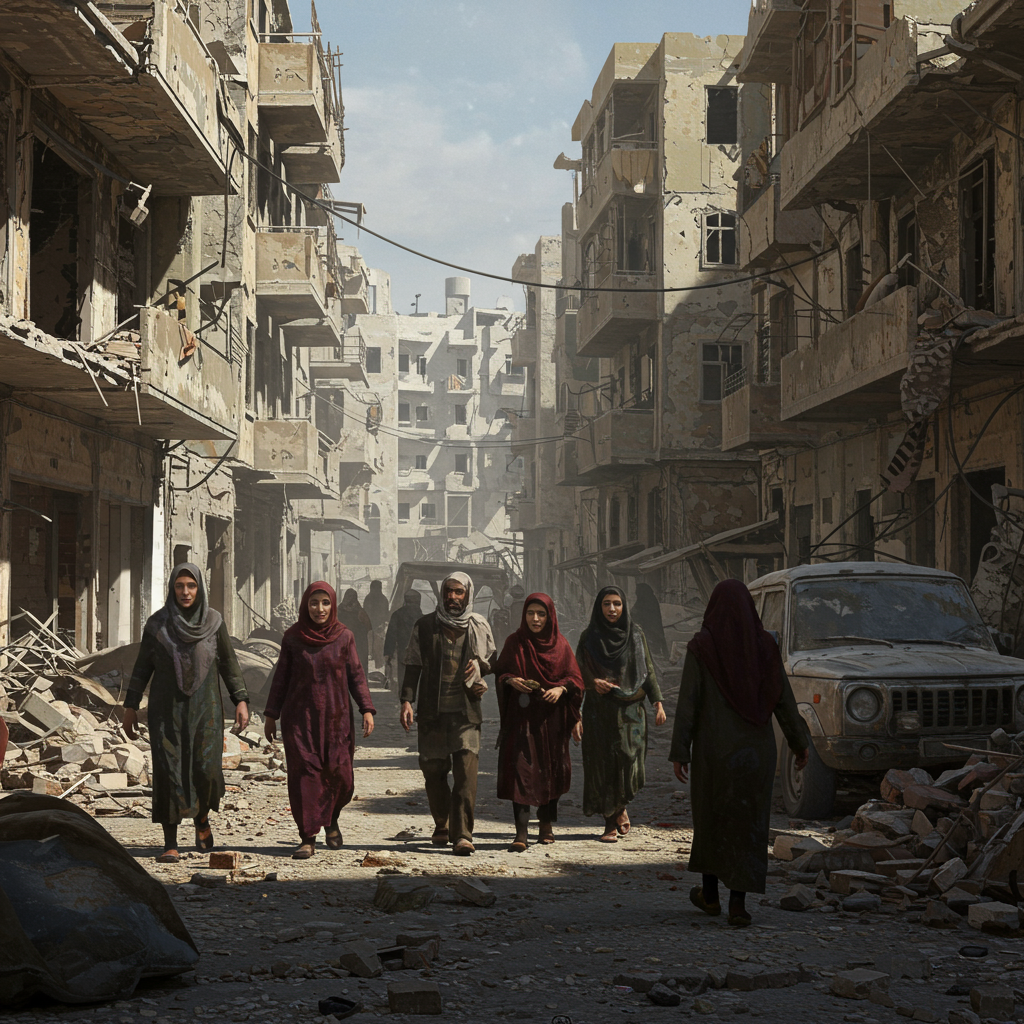Middle East Conflict Explodes: US & Israel Target Iran, Regime Change Floats
The Middle East is gripped by rapidly escalating conflict following coordinated military strikes led by the United States and Israel targeting Iran. While the immediate focus has been on assessing the damage inflicted on Iran’s nuclear infrastructure, a new, potentially far-reaching objective has emerged from Washington and Tel Aviv: the possibility of regime change in Tehran.
The intensification of hostilities saw Israel conduct further strikes inside Iran on Monday, hitting missile, satellite, and radar sites. This followed weekend attacks where U.S. B-2 bombers joined Israel in striking Iranian nuclear facilities. The U.S. operation, dubbed “Operation Midnight Hammer,” involved the deployment of more than a dozen 30,000-pound GBU-57 Massive Ordnance Penetrators (MOPs), marking their first combat use, alongside Tomahawk cruise missiles launched from a U.S. Navy submarine.
Damage Debate: Were Iran’s Nuclear Sites ‘Obliterated’?
Following the U.S. strikes on three key Iranian nuclear sites – Fordo, Natanz, and Isfahan – President Trump declared them “completely and totally obliterated” and a “spectacular military success” that took “the ‘bomb’ right out of their hands.”
Initial U.S. military assessments from Joint Chiefs Chairman Gen. Dan Caine did indicate “extremely severe damage and destruction,” though he noted a full assessment would take time. Defense Secretary Pete Hegseth described it as a “precision operation” achieving “destruction of capabilities.”
However, these claims are being met with significant skepticism, particularly regarding Iran’s nuclear knowledge and materials.
IAEA Concerns: The head of the International Atomic Energy Agency (IAEA), Rafael Grossi, told the U.N. Security Council that “no one — including the IAEA — is in a position to assess the underground damage” at the highly fortified Fordo site. Concerns persist that Iran may have moved some of its highly enriched uranium stockpile, particularly 400kg enriched to 60% purity (just a short step from weapons-grade), before the strikes, as Iranian officials have claimed.
Expert Doubts: Experts caution that military action alone cannot destroy a knowledge-based nuclear program.
Uranium Stockpile Fate Uncertain: U.S. Secretary of State Marco Rubio acknowledged it would take days to confirm if the uranium stockpile was moved but expressed doubt, suggesting it would be vulnerable to Israeli targeting if transported. He urged Iran to turn over or down-blend the material.
Grossi issued a stark warning that the “window of opportunity to return to dialogue and diplomacy” is closing, and failure could lead to “unthinkable levels” of violence and the collapse of the global non-proliferation regime.
Israel Expands Targets to Undermine Regime Control
Adding another layer to the conflict, Israel has openly declared striking targets linked directly to the Iranian regime’s domestic authority and repression, a significant shift from previously focusing solely on military or nuclear assets.
Israel’s defense minister’s office stated they were attacking “regime targets and government repression entities in the heart of Iran” with “unprecedented force.” New targets reportedly included:
Evin Prison, notorious for holding political prisoners.
A symbolic clock in Tehran’s Palestine Square counting down to the destruction of Israel.
Headquarters of the Basij paramilitary forces, involved in domestic repression and morality policing.
Israel also reported striking six airports to expand “air superiority.” Prime Minister Benjamin Netanyahu vowed punishment for Iranian attacks on the Israeli home front.
Iran Retaliates, Ceasefire Attempt Fails
Iran launched its own wave of retaliatory missile and drone attacks against Israel, triggering sirens and sending residents to bomb shelters. Reports indicated dozens of missiles striking sites in Haifa and Ashdod, disrupting electricity supply near a strategic facility.
Iran also targeted U.S. assets, firing 14 missiles at the Al Udeid military base in Qatar. While 13 were intercepted and the remaining deemed nonthreatening, U.S. officials noted the base had been largely evacuated, potentially due to Iran giving “early notice” of the attack, as suggested by President Trump. Both U.S. and Qatari officials reported no casualties.
President Trump later announced a “total ceasefire” between Israel and Iran, claiming both sides came to him “almost simultaneously” asking for “PEACE!” However, this declaration failed to hold immediately. Israel quickly accused Iran of a “severe violation” and resumed “high-intensity operations,” including strikes near Evin Prison and command/security centers in Tehran, causing power outages. Iran’s state media denied violating the ceasefire. The attempted truce negotiations involved U.S. officials and Qatar’s emir.
Regime Change: The New Objective?
While U.S. officials initially stated the strikes were solely aimed at Iran’s nuclear program and not regime change, the rhetoric quickly shifted following the military action.
Secretary of State Marco Rubio initially said the U.S. action “was not a regime change move.” However, late Sunday, President Trump posted on social media: “If the current Iranian Regime is unable to MAKE IRAN GREAT AGAIN, why wouldn’t there be a Regime change???”
The White House Press Secretary clarified Trump was “simply raising a question” about why the Iranian people shouldn’t rise up against the “brutal terrorist regime” if it refuses diplomacy or gives up its nuclear program, adding that the U.S. military posture hadn’t changed.
Significantly, Israeli officials, including Prime Minister Netanyahu, have openly suggested the military actions could pave the way for an uprising to topple the ruling theocracy and have directly called on Iranians to protest.
Potential Iranian Responses and Broader Stakes
As the conflict continues, the focus turns to Iran’s potential next moves. With a significant U.S. military presence across the Middle East, Iran’s extensive layered defenses and proxy networks present several potential retaliation scenarios:
Proxies: Mobilizing groups like the Houthis in Yemen or militias in Iraq to strike U.S. or allied interests, or even instigating attacks further abroad.
Direct Attacks: Attempting to overwhelm U.S. bases in the Gulf with missiles and drones or targeting critical oil and gas infrastructure, similar to the 2019 Saudi Aramco attack.
Strait of Hormuz: Threatening or attempting to close the narrow waterway, through which nearly 20% of the world’s traded oil passes, using fast boats, mines, and coastal missiles. Such a move would severely impact global markets.
Nuclear Acceleration: Withdrawing from the IAEA and the Nuclear Nonproliferation Treaty (NPT) to pursue nuclear weapons clandestinely, potentially enriching uranium beyond 60% towards weapons-grade levels.
Iran’s Foreign Minister traveled to Moscow seeking support, stating diplomacy was off the table until Iran had retaliated and arguing the U.S. “only understand the language of threat and force.”
The escalating conflict has regional and global repercussions, prompting countries to arrange repatriation flights for citizens, increasing concerns about terrorism, and impacting global markets and air travel routes. The U.S. State Department issued a travel alert urging Americans abroad to exercise increased caution.
The current standoff marks a dangerous turning point in the long-standing tensions between Iran, Israel, and the United States, fueled by military strikes, uncertain damage assessments, failed ceasefires, and the overt suggestion of regime change as a desired outcome.
References
- www.cbsnews.com
- www.usatoday.com
- <a href="https://abcnews.go.com/International/live-updates/israel-iran-live-updates?id=122881565&entryId=123091835&cid=socialfbabcnp”>abcnews.go.com
- www.theguardian.com
- thenationaldesk.com



